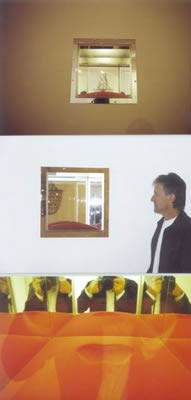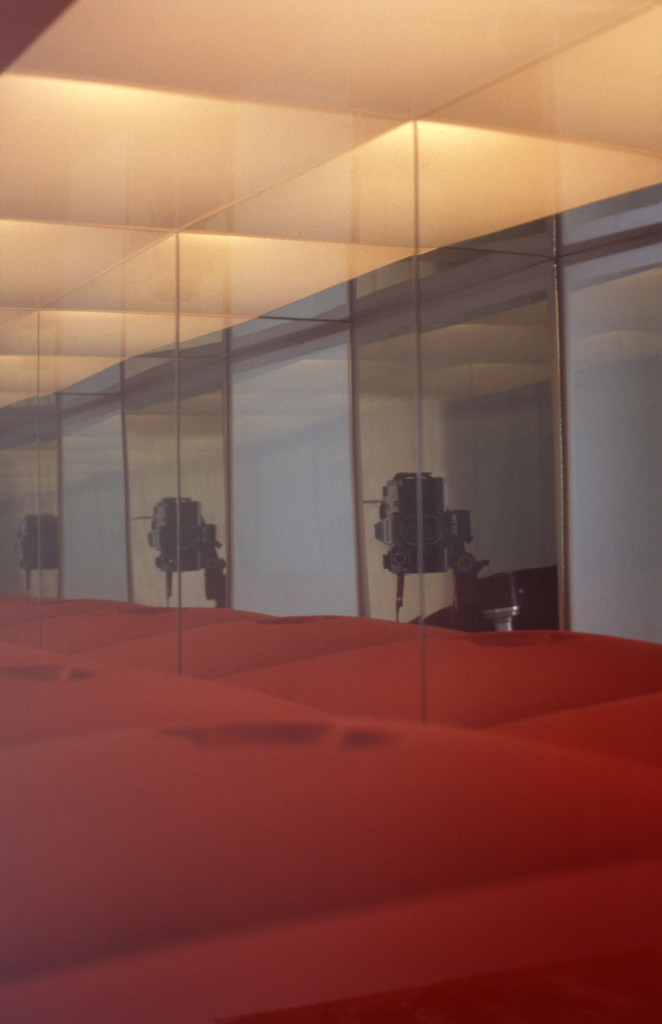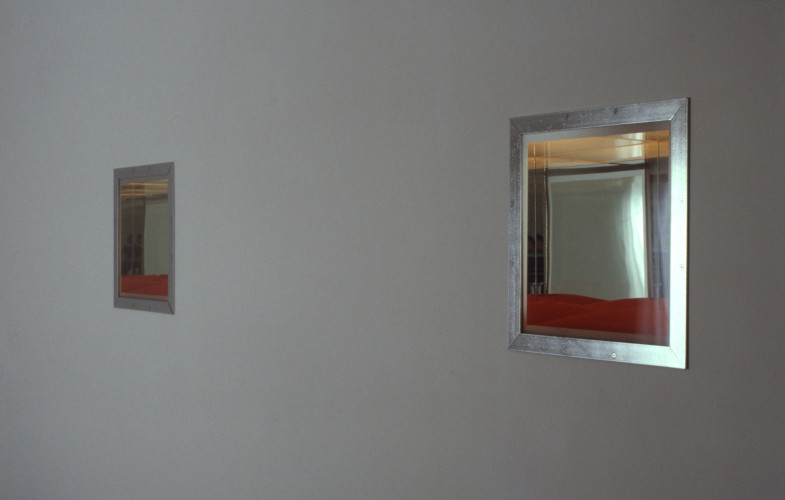Repository (2000)
an empty page
There is an empty page, waiting to be filled.
The catalogue is already designed, its physical presence provides the frame, the support upon which my words will hang. I am writing against time to fill the emptiness of that page. The space I am given has room for 1,000 words, to be dropped in as a single body of text. It will form a sea of black on white. Presence on absence. The laying of a voice upon its silence. Yet to fill it with words seems a clumsy act, a violation, as I imagine this apparently empty, silent space as already resonant with its own quiet meaning.
What, then, does the absence of the object speak of? What happens when the frame, the support, becomes the work itself? Perhaps this is an act of devotion, of solemn reverence. The artist’s refusal to represent might be read as a measure of respect and recognition that the immaterial cannot be fetishised through the imperfections or deceptions of mimesis. A shying away, as it were, from the untruths of the representational object. The act of an iconoclast …
Yet the object is not entirely absent in these works, as the support asserts its own physical presence. The possibility of other sculptural forms is also recalled by an indexical trace, or imprint, evidenced by the negative forms embedded in the cushioned surface at the bottom of the cases.
In a 1924 paper, Freud wrote of the mystic writing pad, ‘a small contrivance’ that for him bears a strong resemblance to the workings of the perceptual apparatus. It consists of a wax slab, overlaid with a transparent sheet, the upper layer of which is celluloid, the lower of which is wax paper. It performs the function of a notepad, or slate, but has the added novelty of being able to retain traces of what has been written on the block of wax. This is made possible by the separate, yet interconnected elements of the pad and its upper layer. The appearance and disappearance of writing that occurs when the celluloid is lifted and lowered is analogous to “the flickering-up and passing-away of consciousness in the process of perception.”
As Freud himself notes, the metaphor has its limitations, but what is important here is the notion of presence. “We need not be disturbed by the fact that in the Mystic Pad no use is made of the permanent traces of the notes that have been received; it is enough that they are present … it is true, too, that once the writing has been erased, the Mystic Pad cannot ‘reproduce’ it from within.” Memory, on the other hand, is capable of accomplishing this.
In a similar way to the mystic writing pad, Braddock’s work, through the impression of an object or form, encourages in the viewer an act of remembrance. And, like the mystic writing pad, it does not reproduce that act, but summons the viewer towards it. Though the indexical trace is not written in the conventional sense of the word, it is a visible and residual sign of the sculptural object, one that might trigger a recollection of its physical presence. It signifies not the impossibility of representation, but the memory of it. In this sense, it speaks of time – of what has been, or what is yet to be.
These traces, then, are not symbolic, but symptomatic of Braddock’s catalogue of sculptural forms. In the context of his oeuvre, they recall for us the shapes of the fragmented, mutated body that appear and reappear within his visual discussion around the role and limitations of the devotional icon. Elsewhere in his work, they exist as solid objects, realised as representational forms and fetishised through repetition and display. Whilst the traces found in these works do not materially replicate these shapes, they have a closeness to their form that suggests something of a tactile proximity to the original sculptural object.
There is then, in Braddock’s work, a sense of flux between the symbolic icon and the less representational indexical trace. This kind of tension in work that engages with the theological has been discussed with reference to the work of Fra Angelico by art historian Georges Didi-Huberman. Central to this is the body, and the challenge of representing the divine word becoming flesh in the form of Jesus Christ. For Didi-Huberman, the “figurability of the Incarnation is entirely revealed in this relation, as the perpetual vacillation between iconicity … which presupposes resemblance and distance, and indexicality … which, in contrast, presupposes dissemblance and a manner of touching.” But Braddock’s intention is not simply to convey the word made flesh. In his work, the tensions between these two desires site his practice in the gap that lies between critique and devotion.
Aside from the workings of memory and the mysteries of the indexical trace, we should also consider what is seen here. What is written on the upper layer of Braddock’s mystic writing pad to be apprehended by our perceptual consciousness? Before us are two luxurious, illuminated containers – mirrored repositories for that which was once laid there. Within this framework our gaze cannot help but be drawn to the image of our own self, reflected in a series of seemingly endless repetitions …
An empty page, filled.
Kyla McFarlane.
October 2000.


